

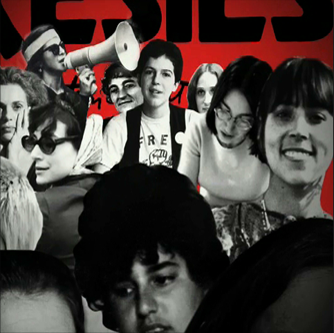

For stills, upcoming screenings, reviews, and more please
check out the film's official webpage: |
The HERETICSTHE HERETICS, 91 min, NTSC 4:3, 2009 |
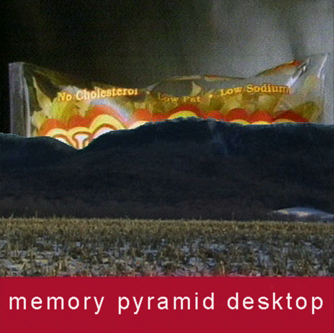
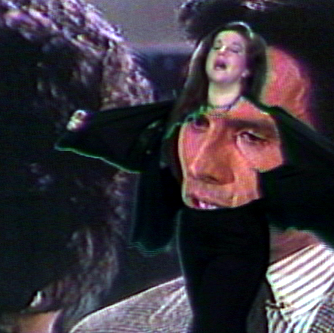

To obtain a copy of this title, please see the film
distribution page on Women Make Movies: |
JOAN DOES DYNASTYJOAN DOES DYNASTY, 35 min, NTSC 4:3, 1986 In the now classic, JOAN DOES DYNASTY, Braderman created the "post-scratch" chroma-key switcher effects she has made famous, the artist inserts her body into the world of the prime time soap opera, "Dynasty," where she does her now classic performance about the ways TV spectatorship simultaneously owns and disgusts its audience. Embodying the love//hate relationships so many of us experience with the characters and values of TV, Braderman "performs" feminist and reception theory, turning the reigning ideas of her period into video vernacular. She skewers 80's obsessions with money and power and its sexual anxieties in a piece - both hilarious and terrifying. “Few have matched the bravery and wit of JOAN DOES DYNASTY” --Bob Reilly, SF MOMA Selected Awards and Screenings:
|
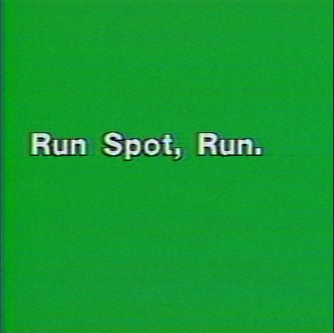

30 SECOND SPOT
|
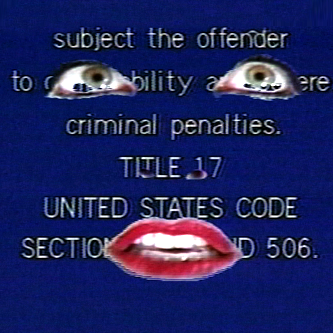

To obtain a copy of this title, please see the film
distribution page on Women Make Movies: |
JOAN SEES STARSJOAN SEES STARS 60 min, NTSC 4:3, 1993 “Videomaker Braderman uses her own body as the site for
exploring the ways our own culture of appearances meets the
politics of identity... She looks at life through rose
colored glasses, then whips them off and dishes the dirt:
movies meet life, life meets death and romance meets Perdue
chicken in this meditation on our illicit VCR pleasures.
Watch and eat your heart out.”--B. Ruby Rich Selected Awards and Screenings:
|
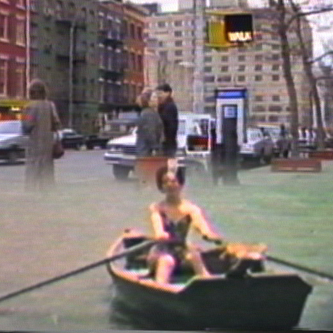

NO MORE NICE GIRLSNO MORE NICE GIRLS 44 min, NTSC 4:3, 1989 No More Nice Girls combines fiction and collage. About what it's like to see your political destiny erased from "popular memory" and dumped in revisionist history's garbage pile. It's about having once felt magically "in synch" with the times; about the friends you made then, and how they sustain you through these times. " … Brilliantly written and realized” --Carrie Mae Weems Selected Awards and Screenings:
|
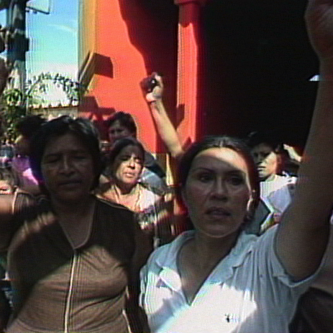

TELL THEM FOR US: MADRE IN NICARAGUATELL THEM FOR US: MADRE IN NICARAGUA 28 min, NTSC 4:3, 1985 Co-produced and edited with Jane Lurie for Madre Video Project. News cinematographer for CBS, Jane Lurie, traveled with a diverse group of women all over the country, visiting schools, hospitals, women’s organizations, and finally, the North where the fighting was going on between The Contras (trained and supported by the US) and protectors of the newly elected Sandinista government. The group sponsored by MADRE was presenting a new ambulance to the Berta Calderon Women’s Hospital. They met hundreds of women, young and old, who were energized by the possibilities of the new democratic Nicaragua which Jane captured with beautiful close-ups and shots of the country-side as the North American women met and compared stories and ideas with their sisters in this young, new state. The piece is accompanied by an original score by the grandchildren of one of Nicaragua’s many famous and accomplished poets in their duo, Guardabaranco. Selected Awards and Screenings:
|


WAITING FOR THE INVASIONWAITING FOR THE INVASION, U.S. CITIZENS IN NICARAGUA 28 min, NTSC 4:3, 1984 WAITING FOR THE INVASION, U.S. CITIZENS IN NICARAGUA by Joan Braderman, Dee Dee Halleck, Skip Blumberg et al was made to oppose the Reagan-sponsored support for the counter revolutionaries in that country on Public TV. It won the Global Village Best Documentary Award in 1984. Confronted with the problem of PBS’s simplistic notion of objectivity (e.g. one side of argument + another side = truth) the group followed the lives of North Americans working with the Sandinistas in fields like agricultural development, economics, and the creation of a new fairer prison system so that they could keep subtitles to a minimum for the sake of American viewers. At the same time they found others such as the local head of Coca Cola and the American ambassador who attempted to defend American intervention in Nicaraguan politics. This strategy worked; the show was picked up by a number of PBS stations around the country who wished to show a perspective unlike that of the rest of the US mass media on the popularity of the Sandinistas. At the time the crew was shooting, many were digging trenches in their backyards to protect them from a possible invasion by the US like the one that just occurred to break the revolution in Grenada. As they worked one could here “no pasaran” chanted throughout Managua. Selected Awards and Screenings:
|
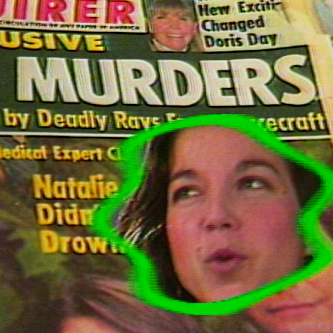

|
|
NATALIE DIDN'T DROWNNATALIE DIDN'T DROWN 28 min, NTSC 4:3, 1983 “The artists' first venture into video performance is a manic enactment of the relationship of readers with tabloids. Championing gossip as "history according to women and more likely to be "true" than the New York Times," she takes us on a schizophrenic personal narrative tour of the world according to the Enquirer.” Martha Gever. Slandering the publisher on screen in true tabloid form, Braderman and De Landa create a style of scratch video, using sometimes vibrating, luridly framed video switcher "wipes" which both satirize and describe tabloid journalism's own glitzy style. An unreconstructed lover of tabloid fantasy, Braderman's face and body fly through the headlines and photos she loves in this brilliant and disturbing satire about popular culture and its ubiquitous place in our lives.” --Elizabeth Hess, “Village Voice“ Selected Awards and Screenings:
|
| Feminism
and Video: A View from the Village (Camera Obscura, 64, Volume 22, Number 1, 2007); |
|
| Independent Media and Other Popular Lies | |
| NO MORE NICE GIRLS: Script | |
| 30 Second Spot: Script |